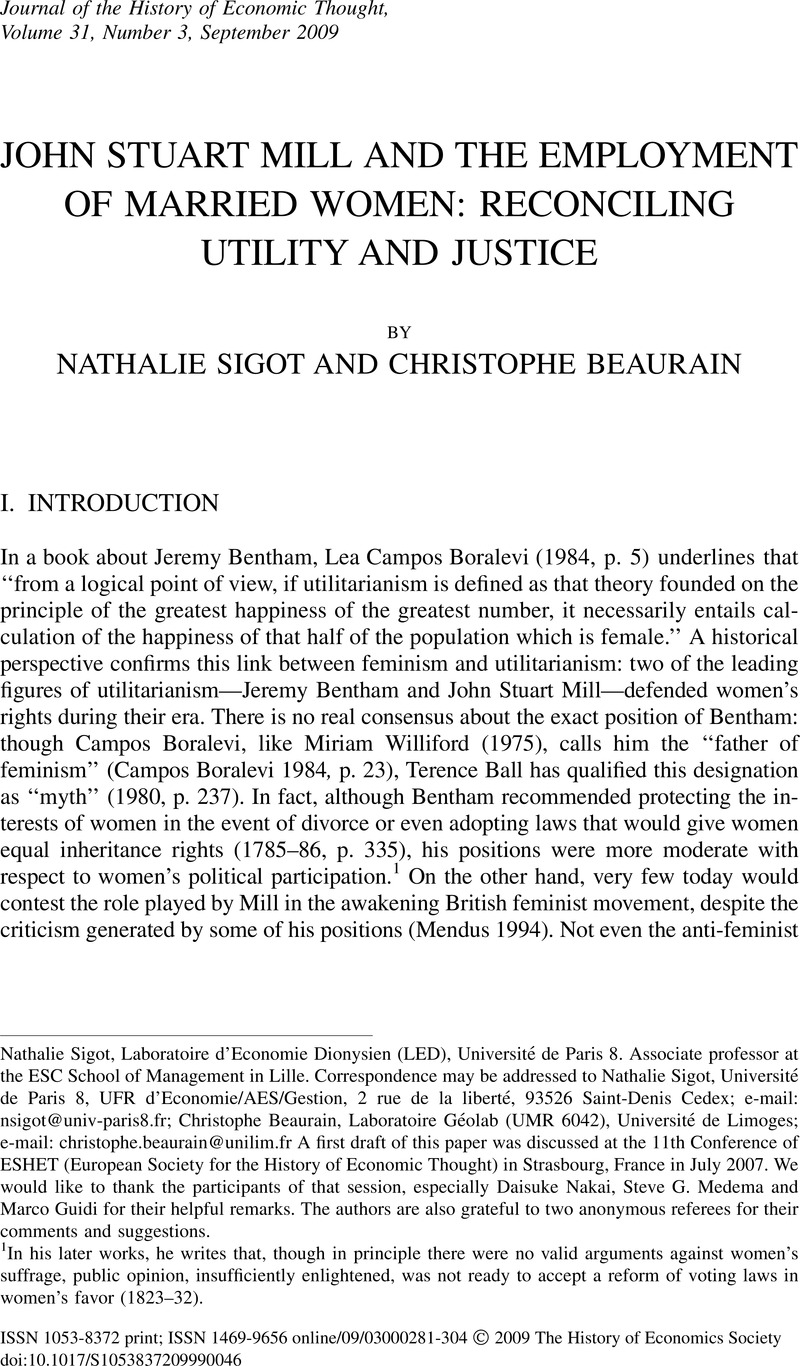Crossref Citations
This article has been cited by the following publications. This list is generated based on data provided by Crossref.
Gouverneur, Virginie
2013.
Mill versus Jevons on traditional sexual division of labour: Is gender equality efficient?.
The European Journal of the History of Economic Thought,
Vol. 20,
Issue. 5,
p.
741.
Gouverneur, Virginie
2019.
John Stuart Mill on wage inequalities between men and women.
The European Journal of the History of Economic Thought,
Vol. 26,
Issue. 6,
p.
1212.
2020.
Références bibliographiques du fascicule.
Revue philosophique de la France et de l'étranger,
Vol. Tome 145,
Issue. 3,
p.
369.
Chassonnery-Zaïgouche, Cléo
and
Cot, Annie L.
2021.
Sentiment and Prejudice.
History of Political Economy,
Vol. 53,
Issue. 5,
p.
799.
Madden, Kirsten
and
Persky, Joseph
2024.
Anna Doyle Wheeler: Gender Equality and the Need for a Cooperative Economic System.
Feminist Economics,
Vol. 30,
Issue. 2,
p.
25.
Becchio, Giandomenica
2024.
The Doctrine of the Separate Spheres in Political Economy and Economics.
p.
33.
Prendergast, Renee
2024.
William Thompson and John Stuart Mill on co-operation and the rights of women.
Cambridge Journal of Economics,
Vol. 48,
Issue. 3,
p.
397.



